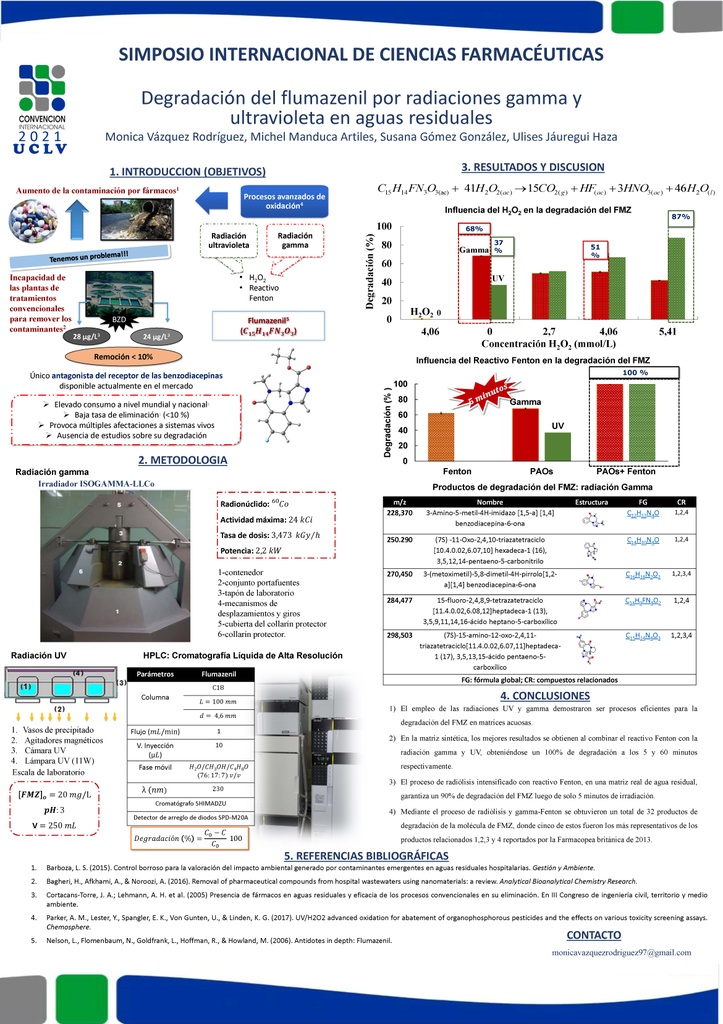Executive Secretary

Simposio Internacional de Ciencias Farmacéuticas
SICF

Resumen
En la presente investigación se estudia la degradación del flumazenil (FMZ) en agua residual mediante radiación gamma y en una matriz sintética mediante radiación ultravioleta (UV) así como la intensificación de ambos procesos con agentes oxidantes (H2O2 y reactivo Fenton). Se evaluaron los parámetros que influyen en la degradación del FMZ como la dosis y el tiempo de irradiación, el pH y la concentración de los agentes oxidantes empleados. La intensificación del proceso de fotólisis con H2O2 ocasionó un incremento en la degradación del fármaco en comparación con el proceso solo, mientras que al combinar el agente oxidante con la radiólisis se obtiene una disminución del porcentaje de degradación. Los mejores resultados se obtuvieron combinando los procesos con el reactivo de Fenton, alcanzándose un 100% de degradación del fármaco en ambos procesos. El proceso de radiólisis optimizado fue evaluado en agua residual real, con una degradación del 90% de la molécula. Mediante el proceso de radiólisis y gamma-Fenton se obtuvieron un total de 32 productos de degradación de la molécula de FMZ, donde cinco de estos fueron los más representativos de los productos relacionados reportados por la Farmacopea británica de 2013.
Abstract
In the present investigation the degradation of flumazenil (FMZ) in wastewater by gamma radiation and in a synthetic matrix by ultraviolet radiation (UV) as well as the intensification of both processes with oxidizing agents (H2O2 and Fenton reagent) is studied. The parameters that influence the degradation of FMZ such as the dose and irradiation time, the pH and the concentration of the oxidizing agents used were evaluated. The intensification of the photolysis process with H2O2 caused an increase in the degradation of the drug compared to the process alone, while when combining the oxidizing agent with radiolysis, a decrease in the percentage of degradation was obtained. The best results were obtained by combining the processes with the Fenton reagent, achieving 100% degradation of the drug in both processes. The optimized radiolysis process was evaluated in real wastewater, with a degradation of 90% of the molecule. Through the process of radiolysis and gamma-Fenton, a total of 32 degradation products of the FMZ molecule were obtained, where five of these were the most representative of the related products reported by the British Pharmacopoeia of 2013.
Sobre el ponente

Sra. Monica Vázquez

